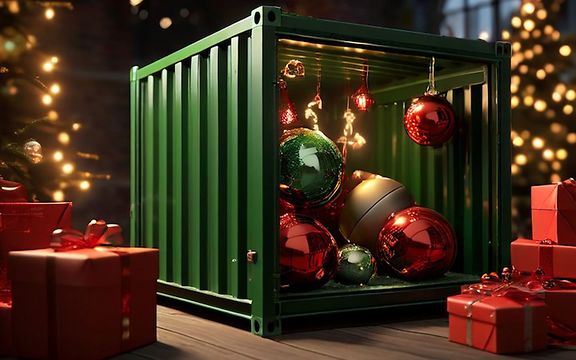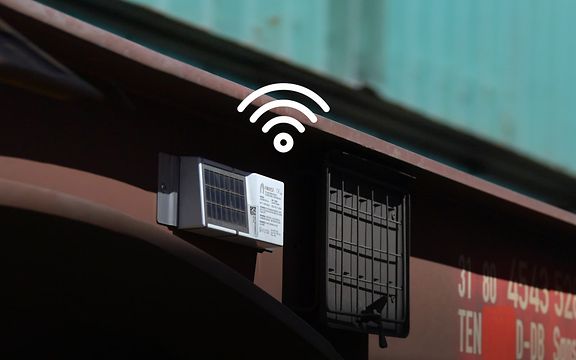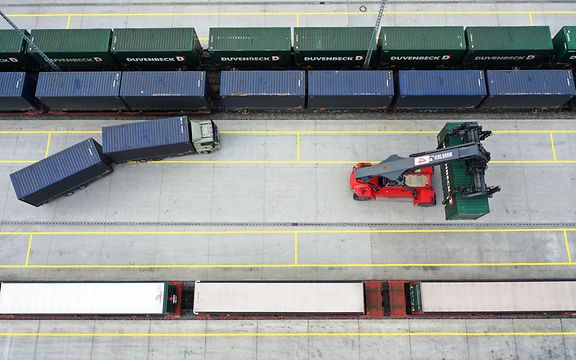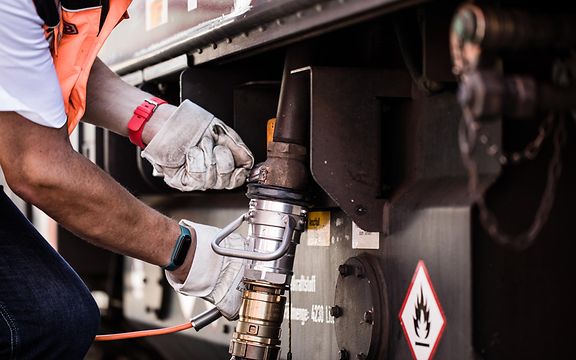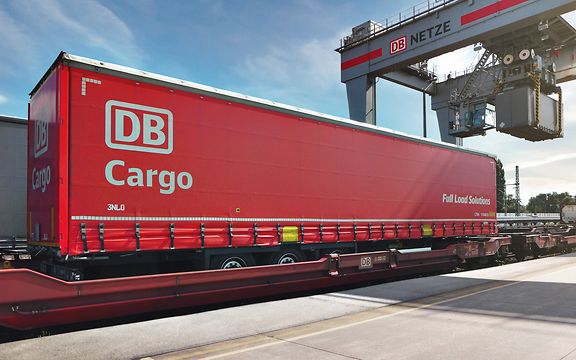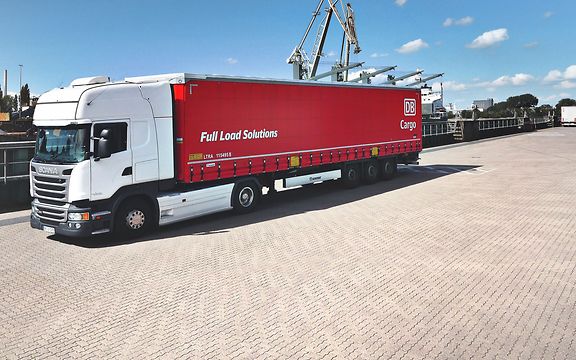A new era in consignment tracking
DB Cargo revolutionises consignment tracking with VABE.
Freight belongs on trains, and we are working towards achieving this goal in a host of different ways. One of them is the Wagon Intelligence project. We launched it in 2017 with the aim of fitting our entire fleet of freight wagons with GPS devices and sensors. By 2021, we had equipped all of DB Cargo's over 63,000 freight wagons with this technology.
Linking data with context
The next step is to do more than just use wagons' position data in isolation: instead, we want to integrate it with our existing systems. Until now, a significant chunk of this status-related information, such as departures and arrivals, border crossings and wagons' locations, required manual input on site at a train formation facility, or it was based on information supplied by staff working at our customer service centre. This would sometimes result in inconsistent status notifications as data had to be altered by hand after entry, were notifies at the wrong point in time or were not notified at all. Manual input and the absence of standardisation meant that information was sparse, particularly for wagons outside Germany. This made seamless tracking almost impossible.
"Value-added business events" revolutionise Track&Trace
Consignment tracking is extremely important to customers, so we collect the data generated by over 63,000 freight wagons. This information goes to our Internet of Things (IoT) cloud, where it is automatically analysed and correlated with context data, such as the details of the relevant orders. This results in VABEs, or value-added business events. One example of a VABE is the automatic logging and subsequent notification of a wagon's movements, such as its departure from, transit through or arrival at a transhipment terminal or a customer's private siding. This is made possible by marking organisational centres with what is known as a geofence, a virtual perimeter that signals when a wagon enters, crosses or leaves a certain area. Geofences can be created automatically, for example for large marshalling yards or stations at major rail hubs. In addition, it is also possible to create one that marks a specific area for freight handovers, in line with a customer's requirements.
To learn more, we spoke to Dr Daniel Rost, the overall project manager for Wagon Intelligence. His work focuses on agile digitalisation projects, the Internet of Things and scalable architectures. We asked him what VABE means for our customers and what its benefits will look like in practice.
What is new about VABE?Daniel Rost_ In the past, we used dashboards to collect and display the data generated by wagons' GPS sensors. This enabled the customer service department and other units to inform customers about the locations of their wagons. While it was easy to illustrate this information in the form of a map, further manual processing was needed to make use of it in other business processes. Thanks to VABE, we are now taking a major step forward by automatically linking this GPS data with information drawn from customers' orders and our infrastructure. This makes it easy for us to see if a wagon's movements match the order's details, i.e. whether or not the wagon is in the right place at the right time.
Can you give us an example of a VABE?DR_ An arrival at a customer's siding is a good example. Thanks to the GPS information, we know exactly where the wagon is and which geofence it is located in. Our system then compares this information with the details in the order, checking if the geofence matches the destination. It then automatically generates a notification of arrival. Generating transit events works in exactly the same way. These occur when a wagon crosses geofences as it passes through specified areas, and they enable us to deliver near-seamless consignment tracking. We no longer have to input any data manually, so this system now works smoothly throughout Europe.
Do the customers have to do anything?DR_ When we launched the project, we started by identifying about 20,000 locations for geofencing. To do this, we developed an algorithm that analysed the entire map and automatically established geofences based on the track infrastructure, such as railway stations. Now, we are working "by hand" to fill in the gaps, for instance specific customer sidings. This also means looking at a customer's individual requirements or preferences. This approach means that VABE brings only benefits for our customers, as there is no additional work for them.
How exactly does it benefit customers?DR_ The key advantages are the speed with which they receive information and the system's end-to-end transparency. Using VABE, our clients can now monitor their wagons within all of Europe in real time. They also have direct access to the system because it is part of our central link2rail platform. Many customers appreciate that Track&Trace now gives them even better consignment tracking outside Germany and also closes the gap with the tracking features that are available for road haulage. This is an important step in the right direction for DB Cargo – it means more goods will be transported by train.
Everywhere in Europe
VABE delivers a fundamental advantage: customers have visibility of wagons' locations not only in Germany but anywhere along the route. In addition, freight wagons from other keepers can be connected to the system and displayed if needed. The function went live at the end of March and is already providing our customers with much higher-quality data via the Track&Trace e-service in link2rail. This, in turn, makes for faster and more precise status updates. We generate almost 200,000 messages every day. About 90% are linked to wagon transits, while the remaining 10% are for arrivals and departures. These notifications are now available via the link2rail eService Track&Trace both via the portal as well as the API for use in the customer's own systems.
End of the video above
However, the integration of VABEs in Track&Trace is only the beginning: we are planning more IT innovations that will use position and sensor data to accelerate and simplify automated processes.
As these activities will improve the competitiveness and logistics capability of rail freight transport, the Wagon Intelligence project is receiving funding from the German Federal Ministry of Digital Affairs and Transport as part of the federal "Zukunft Schienengüterverkehr" (Future of Rail Freight Transport) program. You can find more information here (German only).
Get in touch with our expert.
Claudia Scheibel
General project manager Wagon Intelligence, DB Cargo AG
